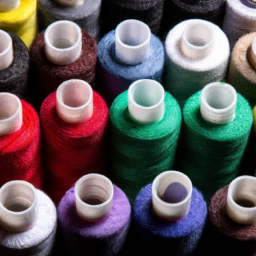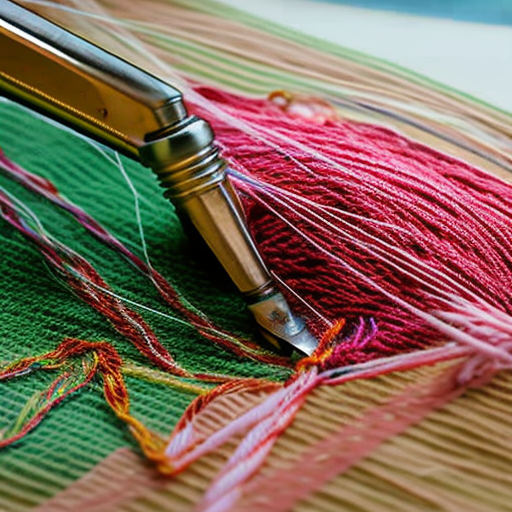

When it comes to fabric crafts and sewing projects, one key element that often gets overlooked is the type of yarn used for sewing. While most people associate yarn with knitting and crocheting, it can also be a valuable tool for sewing and embellishing fabric.
Whether you’re looking to add decorative elements to a garment or attach different layers of fabric together securely, sewing yarn can be the perfect choice. It offers a wide array of colors, textures, and weights, allowing you to be creative and achieve unique results.
There are several methods for sewing yarn to fabric. One of the most common techniques is the running stitch. This involves using a needle and thread to create evenly spaced stitches through both the yarn and fabric. The running stitch is versatile and can be used for attaching yarn appliques, creating intricate designs, or even securing fabric patches.
If you’re aiming for a more decorative effect, you can try using a blanket stitch. This stitch creates a beautiful edging and is perfect for adding yarn borders or trims to fabric. The blanket stitch not only provides a secure attachment but also adds an interesting visual detail to your sewing projects.
Another technique is the whip stitch, which is ideal for joining two layers of fabric. By using a needle and thread to sew over the edge of the fabric pieces, you can create a strong connection while incorporating yarn into the design. This stitch works well for sewing fabric together when making items like pillows, blankets, or upholstery.
It’s worth noting that choosing the right yarn for your sewing project is crucial. Fine, lightweight yarns are great for delicate fabrics like silk or chiffon, while thicker, more robust yarns are better suited for heavyweight fabrics such as denim or canvas.
To make your work stand out, consider experimenting with different yarn textures and colors. Variegated or multi-colored yarns can create stunning effects when sewn onto fabric. Additionally, metallic or sparkly yarns can add a touch of glamour and make your sewing projects truly unique.
When sewing yarn to fabric, it’s important to select the correct needle size. A tapestry needle with a large eye and blunted tip is often recommended to prevent splitting the yarn or damaging the fabric. Take your time when stitching and ensure that the tension is consistent to achieve a professional finish.
In conclusion, sewing yarn to fabric opens up a world of creative possibilities. Whether you’re adding decorative accents, securing fabric layers, or creating unique designs, yarn can be a versatile and eye-catching addition to your sewing projects. With the right techniques and materials, you can transform ordinary fabric into extraordinary works of art.





Awesome DIY project!
This looks like such a useful skill to learn. With the right fabric and yarn, you can create beautiful custom textures and patterns with the projects you make!
I can’t wait to give this a try!
Julia Adams: This is a great skill to learn, and it looks like a lot of fun too! Can’t wait to see all the amazing projects you create.